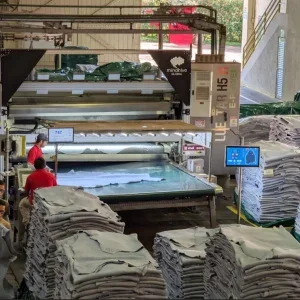
Stahl’s SBTi submission includes a specific commitment regarding the company’s Scope 3 upstream emissions, which Stahl aims to reduce by at least 25% over the next 10 years, compared with the base year (2021). This reduction would primarily be achieved by Stahl replacing its fossil-based raw materials with lower-carbon alternatives. The target is a major step towards the objective of limiting global warming temperature increase to 1.5°C above pre-industrial levels by 2050, as agreed at the 2015 Paris Climate Accords.
Stahl’s extended commitment builds on the company’s existing targets to reduce its emission for Scopes 1 and 2, which were set shortly after the Paris Agreement in 2015. Stahl has since reduced its Scope 1 and 2 (direct) GHG emissions by more than 30%, thanks to operational efficiency gains and by decarbonizing its energy supply.
Scope 3 GHG emissions cover all the additional indirect emissions that can occur in the value chain, including those associated with purchased raw materials, packaging, business travel, and transportation. Stahl’s Scope 3 emissions currently represent over 90% of its carbon footprint.
Stahl CEO Maarten Heijbroek: “Aligning our GHG targets to the Paris Agreement goals is ambitious and will require continuous technology advances throughout the value chain. We are already working closely with our upstream partners to reach the 10-year milestone, and we will report on our progress each year in our annual ESG report.”
Stahl ESG Director Michael Costello: “By setting a clear, quantifiable target to reduce our Scope 3 emissions, we aim to offer our stakeholders the most robust and complete indication to date of how we will realize our climate ambitions as a company. We are committed to taking the necessary steps together to meet this important ambition for our stakeholders, for our planet, and for society at large.”
Visit our website for more information.






